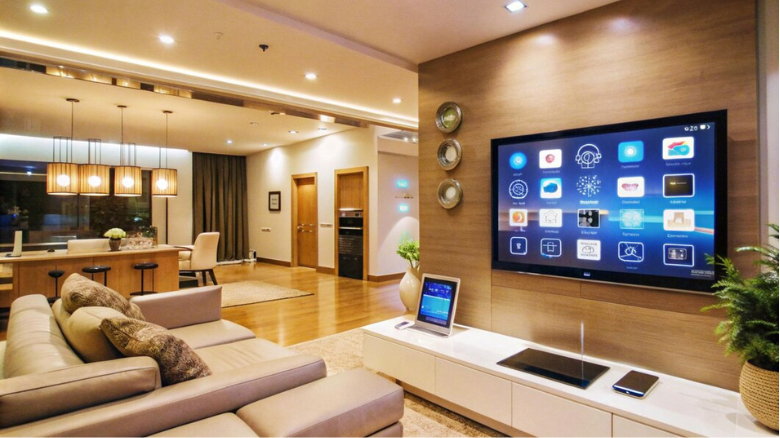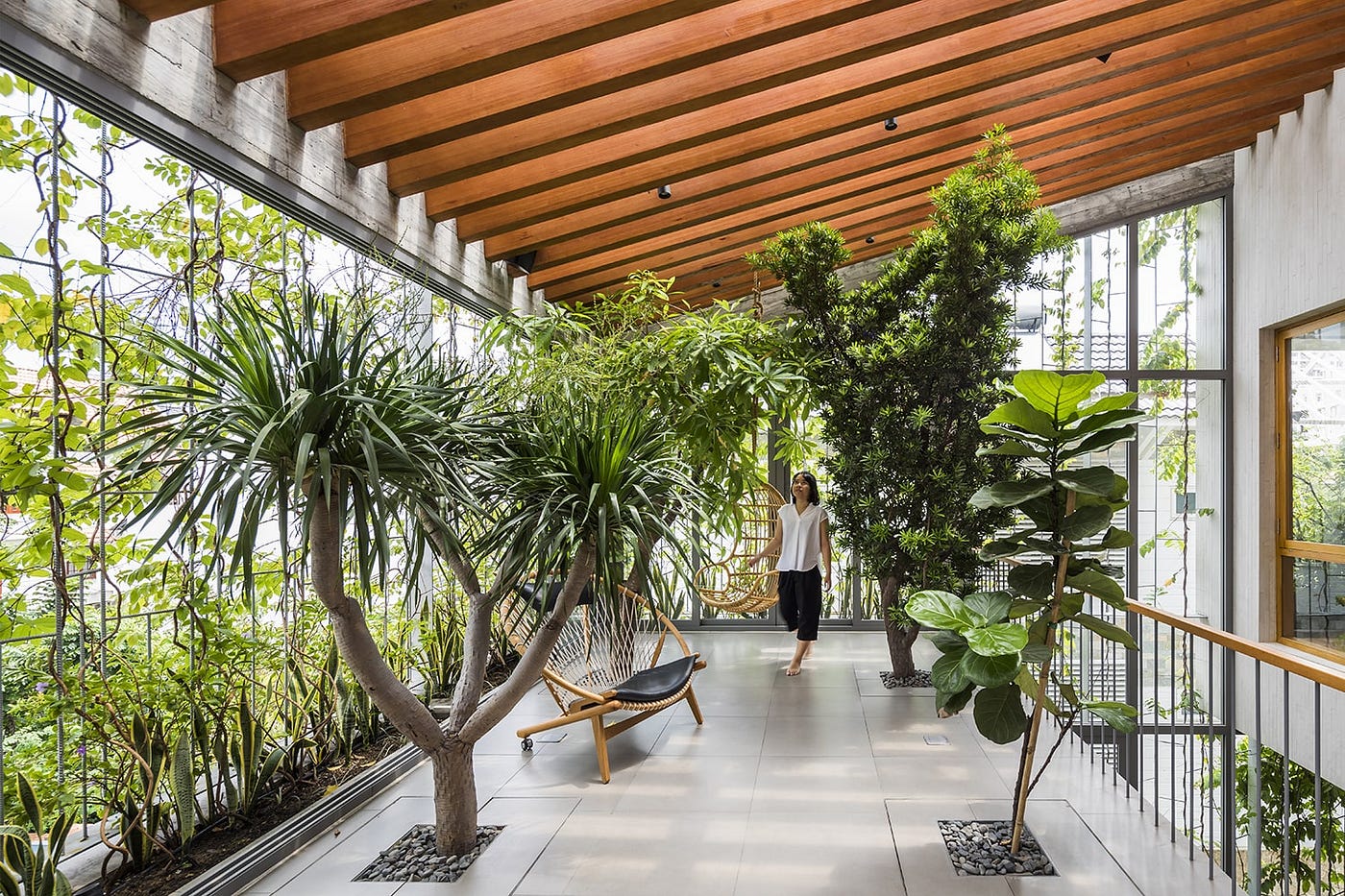News
Top 5 Living Room Interior Design Trends for 2025



Furniture Choices that Define the Trends
Sustainable Furniture Pieces
Eco-friendly living room furniture is no longer niche. Sofas upholstered with recycled textiles, coffee tables made from reclaimed oak, and accent chairs crafted from bamboo composites are stylish and environmentally responsible. Many brands now highlight the origin of their materials, giving homeowners confidence in their choices.
Minimalist and Multifunctional Designs
For those following the minimalist luxury trend, modular furniture takes center stage. Sectional sofas can be rearranged for movie nights or split into smaller units for social gatherings. Nesting tables are another favorite, saving space when stacked and expanding when extra surface area is needed.
Smart-Integrated Pieces
Furniture is getting smarter in 2025. Charging ports built into side tables, media consoles with wireless charging pads, and entertainment units with integrated soundbars are increasingly common. These pieces eliminate clutter and make the living room a true hub of connectivity.
Comfort-Oriented Items
Comfort-forward design translates into oversized lounge chairs, curved sofas, and deep sectionals. Ottomans with plush upholstery double as both seating and storage, blending luxury with practicality.
Lighting as a Core Design Element
Ambient Lighting
In 2025, lighting is not just functional—it sets the mood. Ambient light strips behind shelving, ceiling coves with indirect LED glow, and wall washers create layers of warmth and sophistication.
Task Lighting
Living rooms often serve multiple purposes, so task lighting is key. Adjustable floor lamps for reading corners, desk lights integrated into multipurpose coffee tables, and dimmable sconces near seating areas ensure practicality.
Accent Lighting
Accent lighting highlights the features you love most, whether it’s an indoor plant, artwork, or a textured wall. Spotlights and adjustable track systems are popular, giving homeowners flexibility to change the focus as décor evolves.
Smart Lighting Systems
With smart technology, lighting adapts to time of day, mood, or even media content. Imagine lights dimming automatically when you start a movie or warming up to mimic sunset in the evening.
Cultural and Regional Influences
Scandinavian Influence
Scandinavian design continues to inspire 2025 interiors with its emphasis on simplicity, light wood, and functionality. Paired with eco-friendly materials, it aligns perfectly with sustainability trends.
Japanese Minimalism
Japanese interiors focus on harmony, natural light, and uncluttered spaces. Elements such as low wooden tables, sliding partitions, and neutral palettes reflect both minimalism and biophilic design.
Mediterranean Warmth
Mediterranean-style living rooms bring in terracotta hues, textured walls, and natural stone elements. These align with the cozy color palette trend while celebrating cultural identity.
Urban Modernism
In dense urban areas, industrial aesthetics with exposed concrete, sleek metal accents, and bold artwork are gaining traction. They merge with multifunctional layouts, making small living rooms feel both stylish and practical.
Practical Tips to Apply These Trends
Start Small with Accessories
Not every trend requires a full renovation. Add throw pillows in warm tones, a bamboo side table, or smart bulbs to start experimenting affordably.
Focus on One Major Element
If budget is limited, pick one high-impact element—such as a sustainable sofa, smart entertainment unit, or a biophilic feature wall—and design the rest of the room around it.
Mix High and Low
Pair premium investment pieces like a modular sofa with budget-friendly accents from mass retailers. This approach lets you stay on trend without overspending.
Adapt to Your Lifestyle
Families may prioritize multifunctional furniture, while singles in city apartments may lean toward smart integration. Choose the trend that supports how you live daily, not just how it looks in a magazine.
The Psychology of Color in Living Rooms
Warm Tones for Comfort
Colors like terracotta, ochre, and caramel naturally evoke warmth. They create a sense of intimacy, making them ideal for family-centered living rooms. These tones are especially popular in colder climates, where they visually add warmth during long winters.
Cool Tones for Balance
Soft blues, sage greens, and muted grays add calmness to a space. These hues align with biophilic design principles, encouraging relaxation and connection with nature. Many designers pair cool tones with natural wood or warm neutrals to avoid sterility.
Bold Accents for Personality
While minimalism favors neutrals, bold pops of color—like emerald green chairs or navy blue feature walls—are making a comeback in 2025. These accents allow homeowners to express individuality without overwhelming the space.
Textures and Materials Beyond Furniture
Wall Treatments
Accent walls are re-emerging, not with paint but with textured finishes. Venetian plaster, wood paneling, and stone veneers give depth and character to otherwise simple layouts. Wallpaper with botanical or geometric prints is also trending.
Rugs and Carpets
Area rugs now serve as both comfort and statement pieces. Natural fibers such as jute and wool are popular for eco-conscious buyers, while patterned synthetic blends remain affordable for families with children or pets.
Curtains and Drapes
Floor-to-ceiling curtains in linen or velvet add elegance while also controlling natural light. Sheer curtains layered with blackout drapes combine practicality with beauty, allowing homeowners to shift between airy and cozy moods.
Hybrid Living Rooms: Work Meets Leisure
The New Role of Living Rooms
With remote and hybrid work becoming permanent, living rooms now double as flexible workspaces. Designers in 2025 focus on multifunctional layouts that can easily transition between professional and leisure modes.
Design Solutions
Hidden desks that fold out from shelving units.
Mobile partitions or sliding panels to separate work areas from relaxation zones.
Ergonomic chairs designed to blend into living spaces without looking like office furniture.
Maintaining Balance
The challenge is ensuring the room still feels relaxing after work hours. Smart lighting that shifts from bright white during the day to warm tones in the evening helps maintain the balance.
Case Studies: Trends in Different Home Types
Compact Urban Apartments
In city apartments, multifunctional furniture is a necessity. Foldable coffee tables, wall-mounted shelves, and large mirrors make small spaces feel open. Warm color palettes prevent compact layouts from feeling cold or cramped.
Suburban Family Homes
Suburban houses allow more flexibility. Large sectional sofas, entertainment centers, and biophilic features like indoor trees or vertical gardens dominate. Sustainability often plays a larger role since families want long-lasting, eco-friendly investments.
Luxury Villas
Luxury homes showcase the fusion of all five trends. Expect expansive smart lighting systems, bespoke eco-friendly furniture, and natural materials like marble, stone, and exotic woods. Indoor-outdoor flow is emphasized, with glass walls opening to patios and gardens for a seamless biophilic experience.
Bringing Trends Together in Practice
Example Scenario
Imagine a medium-sized suburban home:
Walls painted in warm taupe for coziness.
A bamboo coffee table paired with a modular linen sofa.
Smart lighting that adjusts based on the family’s daily routine.
Floor-to-ceiling windows framed with layered curtains to balance natural light.
Indoor plants and a water feature completing the biophilic design.
This setup embodies sustainability, multifunctionality, technology, warmth, and nature—the very essence of 2025’s living room design trends.
Furniture Layout Strategies for Every Space
Small Living Rooms
Compact spaces require clever layouts. Designers recommend floating furniture away from walls to create the illusion of openness. Multipurpose pieces, such as ottomans with storage or wall-mounted desks, maximize usability without clutter. Neutral colors paired with mirrors further enhance the sense of space.
Medium-Sized Spaces
In mid-sized homes, balance is key. Sectional sofas paired with modular shelves give flexibility, while area rugs help define zones for entertainment, reading, and work. Lighting becomes a natural divider—task lamps for corners, pendant lights for the central seating area.
Large Living Rooms
Expansive spaces benefit from zoning. A luxury villa may divide its living room into a lounge corner, a media area, and even a mini-library. Oversized sofas and statement coffee tables act as anchors, while indoor greenery softens the scale.
The Role of Art and Decorative Accents
Art as a Focal Point
In 2025, art is not just decoration—it’s identity. Large-scale wall art, sculptures, and custom pieces reflect the homeowner’s personality. Many opt for local artists to connect culture with design.
Decorative Details
Throw pillows, vases, and textured blankets remain popular for layering. Metallic accents in gold or brass are being paired with warm earth tones, adding a touch of sophistication without overwhelming minimal designs.
Statement Lighting Fixtures
Beyond functionality, chandeliers and sculptural floor lamps double as works of art. Geometric shapes, organic forms, and eco-friendly materials dominate lighting design, merging utility with beauty.
Sustainability and Shopping Habits
Conscious Consumerism
Homeowners in 2025 increasingly ask: Where did this come from? Furniture brands are being transparent about sourcing, carbon footprint, and production methods. This has led to a surge in demand for recycled, certified, or upcycled materials.
Local vs Global Purchases
Supporting local artisans is trending, both for sustainability and cultural pride. At the same time, global e-commerce makes it easy to access innovative designs from around the world. Consumers are blending both, prioritizing eco-credentials and fair trade.
Long-Term Investment vs Seasonal Updates
Investing in Core Furniture
Experts recommend spending more on items you’ll keep for 10 years or more, such as sofas, dining tables, or entertainment consoles. These should be timeless, durable, and versatile enough to adapt to evolving styles.
Updating with Accessories
Seasonal trends are easier (and cheaper) to explore with rugs, cushions, and art. Swapping warm-toned pillows for cool pastel shades can transform the vibe of your living room without major expense.
Technology Lifespan
Smart furniture should be chosen carefully, ensuring it has updatable software or universal compatibility. Unlike traditional décor, tech-integrated items risk faster obsolescence if not selected wisely.
Expert Tips from Interior Designers
Balance Beauty with Function
Interior designers emphasize that a stunning living room must still feel livable. Avoid over-styling; leave breathing room so the space feels natural.
Don’t Forget Acoustics
With larger open-plan designs, acoustics matter. Rugs, curtains, and soft furniture help absorb sound, making conversations and entertainment more pleasant.
Create Personal Zones
Even within shared living rooms, carve out small personal corners—a reading nook, a meditation spot, or a mini office. These micro-zones reflect your lifestyle and make the room more adaptable.
Example: A Trend-Fused Apartment
Imagine a downtown apartment redesigned for 2025:
Furniture layout: a modular sofa floating in the center with a bamboo coffee table.
Decor accents: wall art from local creators, a sculptural floor lamp doubling as a conversation piece.
Sustainability: recycled fabric upholstery and reclaimed wood shelving.
Smart integration: app-controlled lighting that transitions from work mode to movie night ambiance.
Comfort layering: terracotta cushions, linen curtains, and a wool rug tying everything together.
The result is a space that feels modern, sustainable, and deeply personal—an authentic reflection of 2025’s interior design spirit.
Lighting as More Than Illumination
In 2025, lighting is no longer just about brightness—it’s about shaping mood. A well-designed living room uses layers of lighting to support different moments of the day. Warm LED strips tucked behind shelves add subtle ambiance, while pendant lights above coffee tables create intimacy during evening conversations. Dimmable systems allow homeowners to switch from vibrant energy for gatherings to soft, relaxing glows for quiet nights. The trend extends to decorative lighting too, with sculptural lamps doubling as art pieces that anchor the room’s aesthetic.
The Living Room as a Social Hub
Even in a digital age, the living room remains the home’s gathering point. Families use it for shared meals, games, and entertainment, while friends see it as the heart of social connection. In 2025, designers are leaning into this role by making spaces more versatile. Large sectional sofas encourage group seating, while modular arrangements let people create cozy corners when needed. Technology also supports socializing, from integrated surround sound systems to projectors that transform the room into a mini cinema.
Balancing Trends with Personal Style
With so many exciting ideas, it can be tempting to follow every trend. Yet the most successful living rooms reflect not just 2025’s design language, but also the homeowner’s personality. Minimalist layouts can be softened with heirloom accessories, while bold color accents can coexist with timeless neutrals. The key is curation: choose one or two dominant trends and weave in details that speak to your identity. By doing so, you ensure your living room feels both contemporary and authentic, rather than a temporary showroom.
When thinking about the top living room interior design trends 2025, it’s essential to remember that trends are guides, not rules. Your living room should tell your story, reflecting both modern innovations and personal comfort. Adding a smart device, introducing eco-friendly furniture, or painting walls in warm tones can completely transform the atmosphere. Small, intentional choices make a bigger impact than simply following every new idea. By blending timeless elements with current styles, you create a living space that feels inviting today and adaptable for tomorrow. In the end, design works best when it feels like home.

